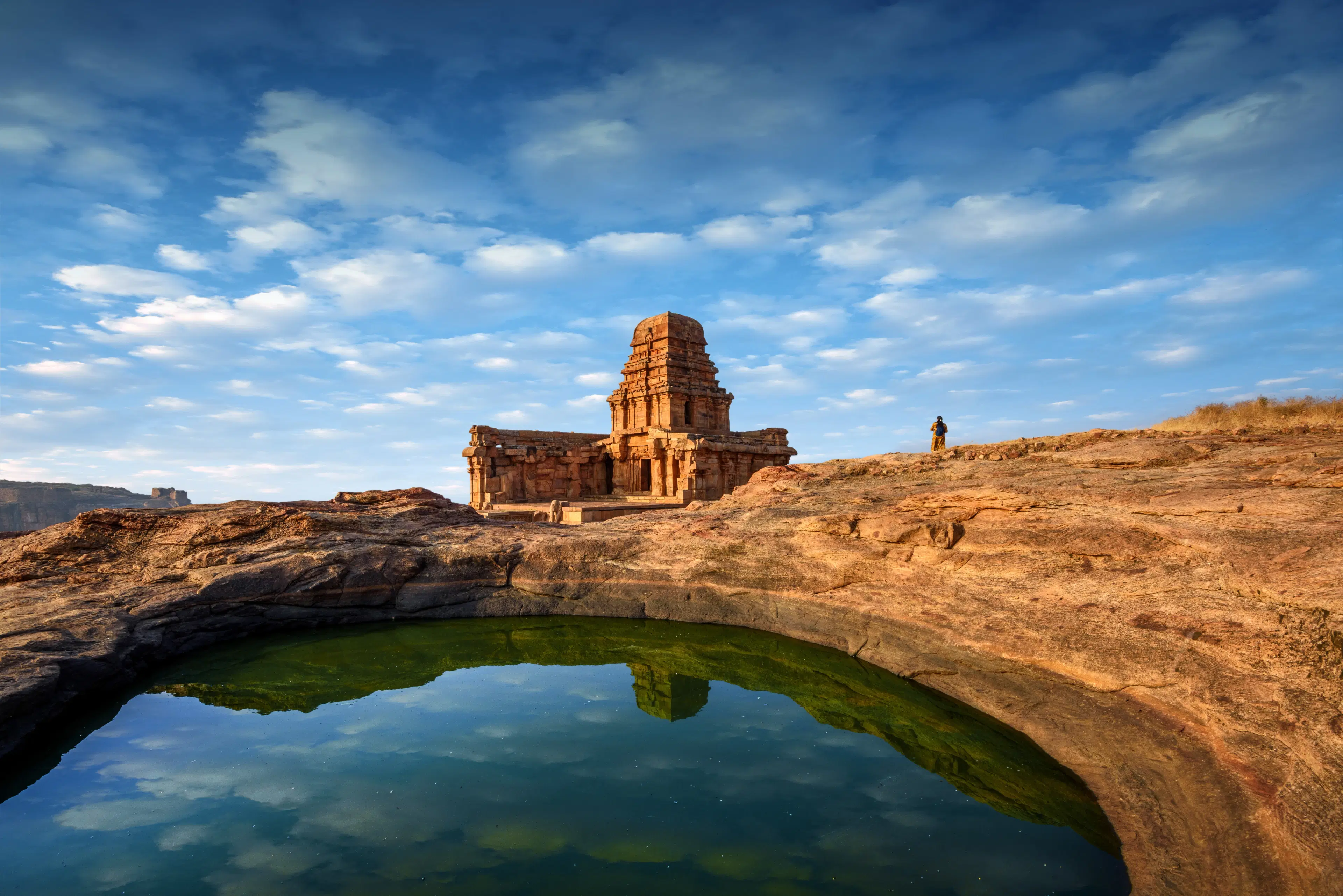
Hotels
•04 min read

Rajasthan’s rich heritage beckons travelers to discover its hidden treasures. Tucked away in the serene landscapes of Rajasthan, the Baroli temples form an ancient Shiva complex, renowned for their unique architecture and historical significance. In this blog, we journey through seven hidden gems of the Baroli temple complex, exploring mesmerizing sculptures, intricate carvings, and the rich tapestry of history and culture that surrounds these medieval marvels.
The Baroli temples are nestled near Rawatbhata, approximately 50 km from Kota, and just a short distance from the banks of the Chambal River. This proximity to major landmarks makes the complex easily accessible via road. Travelers can enjoy a scenic drive along rural thoroughfares, with the promise of an offbeat experience that stands apart from more frequented destinations.
Dating back to the 10th century, the Baroli temples embody the exquisite artistry of the Gurjara-Pratihara period. Central to the complex is the Ghateshwara Mahadeva temple, a symbol of medieval devotion and architectural brilliance. This temple, with its detailed sculptures and ancient design, serves as a reminder of a time when devotion and artistry went hand in hand.
The Ghateshwara Mahadeva temple stands as an enduring testament to medieval craftsmanship. Distinguished by its intricately carved sculptures and a design that reflects the reverence for Lord Shiva, this temple is the heart of the complex. Its architecture conveys the spiritual fervor of its era, making it a must-visit for enthusiasts of ancient Shiva temples in Rajasthan.
The Vamanavatar temple is celebrated for its detailed carvings that bring to life the mythological tales of Vishnu’s dwarf avatar. The artistic depictions in this temple highlight its strong connection to Hindu mythology while adding an intriguing dimension to the overall narrative of the temple complex.
Dedicated to the divine trinity of Brahma, Vishnu, and Shiva, the Trimurti temple captivates visitors with its balanced artistry and intricate relief work. The temple’s artistic representations not only echo religious significance but also display a harmonious blend of cultural and spiritual symbolism that defines medieval temple architecture.
At the Ashtamata temple, the focus shifts to the eight revered mother goddesses. This shrine is noted for its symbolic importance, where each sculpture portrays strength and divine nurturing. The refined detailing in every carving makes this temple a unique landmark among hidden temple complexes in India.

One of the most intriguing sites in the complex, the Sheshashyan temple, is renowned for its magnificent reclining Vishnu sculpture. The delicate craftsmanship evident in the depiction of Vishnu radiates the serene elegance of ancient art, seamlessly integrating with the broader Baroli temple aesthetics.
This temple is dedicated to Lord Ganesha, highlighted by its distinct carvings that celebrate his benevolent form. Pilgrims and enthusiasts alike find a sense of comfort and reverence here, making it a key stop on the spiritual journey through the Baroli temples.
Perhaps the most striking feature is the Shiva temple located within a water tank. Its unique placement demonstrates architectural ingenuity and infuses the site with an aura of mystique. The temple’s integration with water enhances its spiritual ambience, making it a significant marker of the historical and religious tapestry of the region.
Baroli temple architecture is a classic example of the Gurjara-Pratihara style. This style is characterized by meticulous carvings, thoughtful temple layouts, and a design that seamlessly incorporates both spirituality and functionality. The influence of medieval Indian craftsmanship is evident in the precise detailing and proportions observed throughout the temple complex.
A walk through the complex is like traversing an open-air museum of ancient art. The sculptures capture mythological scenes, divine deities, and floral motifs with striking clarity. These artistic details not only enhance the visual appeal of the temples but also narrate stories of faith, creativity, and the enduring legacy of medieval artisans.
The Baroli temples are an ideal getaway for those seeking lesser-known pilgrimage spots in India. Their serene environment and spiritual ambiance create a perfect retreat for both the wanderer and the planner. Enjoy a journey into a world where history, art, and spirituality converge in an authentic, tranquil setting.
These ancient Shiva temples in Rajasthan are not just places of worship; they are custodians of a rich cultural legacy. Exploring the Baroli temple complex allows visitors to connect with a profound sense of heritage, witnessing first-hand the historical narratives carved into stone.

Beyond the temples, visitors can explore nearby attractions such as the Chambal River Sanctuary, Bhainsrorgarh Fort, and Chittorgarh Fort. This makes the Baroli complex an excellent addition to any comprehensive itinerary, offering diverse experiences that cater to both historical curiosity and natural beauty.
Did You Know? Despite centuries of invasions and natural wear, the Baroli temples stand as a testament to the resilience of Rajasthan’s heritage. Each sculpture tells a story of devotion and artistry that has endured the test of time.
Located near Rawatbhata in Rajasthan, the Baroli temples are approximately 50 km from Kota and close to the Chambal River.
These temples date back to the 10th century and are a classic example of Gurjara-Pratihara architecture, featuring intricate sculptures and relics from medieval times.
The complex comprises notable temples such as Ghateshwara Mahadeva, Vamanavatar, Trimurti, Ashtamata, Sheshashyan, Ganesha, and the Shiva temple in the tank.
Travelers can easily reach the site via road from Kota or Rawatbhata, with local transportation options available for a smooth journey.
The temples offer a unique blend of history, art, and spirituality, presenting an offbeat experience ideal for ancient temple seekers and cultural explorers alike.
The Baroli temples in Rajasthan, a lesser-known Shiva complex, vividly illustrate the brilliance of medieval Indian architecture and the timeless allure of spiritual heritage. Exploring these hidden gems offers a unique opportunity to immerse oneself in intricate art, rich history, and enduring cultural narratives, leaving every traveler with memories that resonate with the soul of Rajasthan.